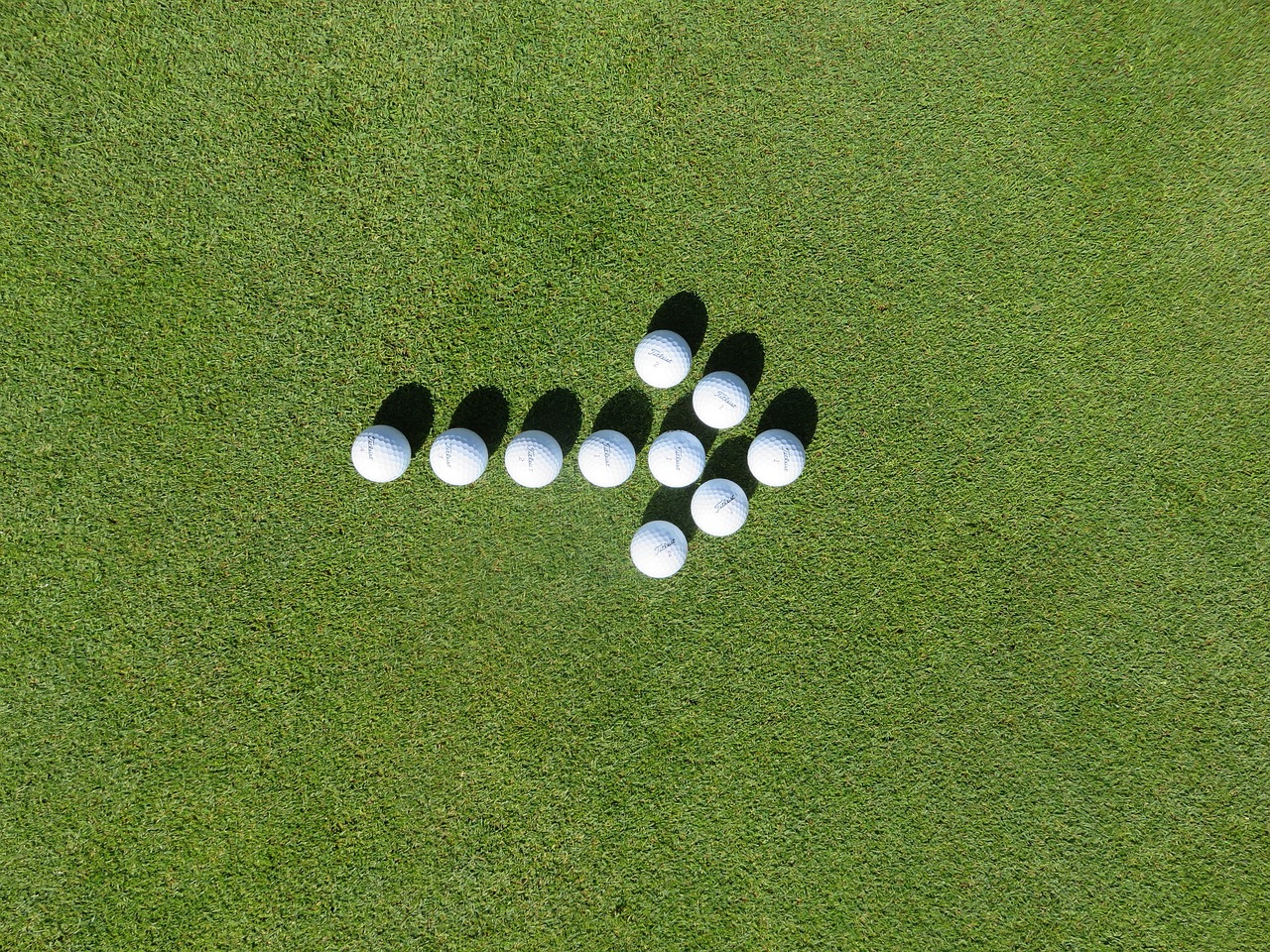
Elevate Your Short Game: Proven Strategies For Mastering Pitching And Chipping
If you’re looking to take your golf game to the next level, then it’s time to focus on your short game. In this comprehensive and detailed article, you’ll find proven strategies for mastering pitching and chipping that will benefit people of all ages interested in golfing. With a friendly tone and easy-to-understand language, this article is designed to educate and inform even a 9th grader about the art of pitching and chipping. So, get ready to elevate your short game and impress your friends on the golf course with these expert tips and techniques.
The Basics of Pitching and Chipping
The Difference Between Pitching and Chipping
When it comes to golf, understanding the difference between pitching and chipping is essential. Pitching refers to shots played with a higher trajectory and longer distance, typically used when the golfer is farther away from the green. Chipping, on the other hand, involves shorter shots played with less loft and a lower trajectory, typically used when the golfer is closer to the green. By understanding the distinction between these two techniques, you can better strategize and adapt your approach on the course.
Understanding the Importance of the Short Game
While it’s tempting to focus solely on driving the ball long distances, the importance of the short game cannot be overstated. A strong short game, including pitching and chipping, can greatly impact your overall score. In fact, experts often say that the short game makes up more than half of your total shots during a round of golf. By investing time and effort into mastering pitching and chipping, you can greatly improve your chances of success on the course.
Essential Techniques for Pitching and Chipping
To excel at pitching and chipping, it’s crucial to have a strong foundation of fundamental techniques. Proper stance, grip, and alignment play a vital role in executing accurate shots. By adopting the correct posture and grip, you can achieve better control over the club and enhance your ability to strike the ball cleanly. Additionally, learning to balance your body weight for stability can further improve your consistency and accuracy. By focusing on these essential techniques, you can develop a solid foundation for your pitching and chipping skills.
Developing Proper Club Selection
Choosing the Right Club for Each Situation
The key to successful pitching and chipping lies in selecting the right club for each situation. The loft and bounce of the club are key factors to consider when making your club selection. The loft determines the trajectory and height of the ball, while the bounce refers to the angle between the leading edge of the club and the ground. Different clubs offer varying degrees of loft and bounce, allowing you to tailor your shots to the specific conditions of the course. By understanding the characteristics of your clubs and how they interact with different lies and distances, you can optimize your club selection and increase your chances of achieving the desired outcome.
Understanding Loft and Bounce
Loft and bounce are important characteristics to consider when selecting clubs for pitching and chipping. The loft of a club is measured in degrees and determines the trajectory of the ball. Clubs with higher lofts, such as wedges, produce a higher ball flight, while clubs with lower lofts, such as irons, generate a lower trajectory. The bounce of a club, on the other hand, affects how the club interacts with the ground. A higher bounce angle creates more forgiveness on shots played from soft or fluffy lies, while a lower bounce angle allows for cleaner contact on firm ground. By understanding the loft and bounce of your clubs, you can make more informed decisions on the course and optimize your short game performance.
Factors to Consider when Selecting Clubs
When selecting clubs for pitching and chipping, several factors come into play. The distance to the target, the lie of the ball, and the height and trajectory you desire are all important considerations. Assessing the lie of the ball, whether it’s sitting on a tight lie, in the rough, or in a bunker, will help determine the appropriate club to use. Additionally, considering the speed and slope of the green can influence your club selection for chipping. By taking all these factors into account, you can ensure that you choose the right club for each situation, setting yourself up for success on the course.
Mastering the Setup
Proper Stance, Grip, and Alignment
The setup is a crucial aspect of pitching and chipping. Achieving the correct stance, grip, and alignment can greatly improve your ability to strike the ball accurately and consistently. For pitching, a slightly wider stance and a more upright posture are recommended, allowing for a fuller and more controlled swing. When it comes to chipping, a narrower stance and a slightly lower hand position can provide better control and touch. The grip should be firm yet relaxed, allowing for free movement of the wrists throughout the swing. Finally, aligning your body parallel to the target line helps ensure that your shots are aimed correctly. By mastering the setup, you set the stage for successful pitching and chipping.
Balancing Body Weight for Stability
Maintaining proper balance throughout the pitching and chipping motions is essential for stability and control. As you set up for your shot, distribute your body weight evenly between your feet, slightly favoring the lead foot. During the swing, shift your weight onto your lead foot (left foot for right-handed golfers) to create a controlled transfer of energy. This weight shift helps generate power and promotes a consistent and solid strike on the ball. Balancing your body weight effectively can greatly enhance your ability to execute accurate and controlled shots around the green.
Unique Considerations for Pitching and Chipping
Pitching and chipping require unique considerations due to their different shot requirements. With pitching, it’s important to strike down on the ball, compressing it against the clubface to achieve greater distance and trajectory. Chipping, on the other hand, requires a more shallow contact with the ball, resulting in a lower and more controlled flight. Additionally, the swing dynamics differ between pitching and chipping, with pitching involving a longer and more fluid motion, while chipping emphasizes a shorter and more controlled stroke. Understanding these nuances and making the necessary adjustments will help you master both pitching and chipping techniques.
Perfecting the Pitch Shot
Understanding the Pitch Shot Technique
The pitch shot is a valuable skill to have in your short game arsenal. It allows you to hit high, soft-landing shots with control and precision. To execute a successful pitch shot, start by opening your stance slightly, which encourages a steeper swing path. Position the ball slightly back in your stance to promote a downward strike. As you swing, hinge your wrists on the backswing and maintain this angle throughout the downswing, allowing for a crisp strike and increased spin. Focus on accelerating through the ball and following through with a balanced finish. By understanding and practicing the pitch shot technique, you can elevate your short game to new heights.
Mastering the Backswing and Downswing
The backswing and downswing are crucial components of the pitch shot. During the backswing, focus on maintaining a wide and smooth arc, allowing your wrists to hinge naturally. Avoid excessive wrist movement or a jerky motion, which can lead to inconsistency and mishits. As you transition into the downswing, maintain the wrist hinge and start the club moving with a gradual increase in speed. Strive for a descending blow on the ball, making crisp contact to generate the desired trajectory and spin. By mastering the backswing and downswing, you can consistently execute accurate pitch shots.
Adding Spin and Control to Your Pitch Shots
One of the key elements to perfecting your pitch shots is the ability to add spin and control to your shots. Spin allows you to stop the ball quickly on the green and helps you navigate challenging pin positions. To increase spin, focus on striking the ball with a slightly descending blow and using a ball with a higher spin rate. Additionally, generating more clubhead speed through an extended release can create more spin. Experiment with different techniques, such as opening the clubface slightly, to find the right amount of spin for each shot. By honing your spin control, you can elevate your pitching game and approach the green with confidence.
Executing Precise Chip Shots
The Fundamentals of Chipping
Chipping is a fundamental skill in golf that requires finesse, touch, and accuracy. The goal of a chip shot is to get the ball onto the green quickly and close to the hole. To achieve this, focus on a compact and controlled swing. Position the ball slightly back in your stance and use a narrow stance to encourage a steeper swing path. Keep your hands ahead of the ball at impact to ensure clean contact and prevent the club from digging into the ground. By mastering the fundamentals of chipping, you can consistently execute precise shots around the green.
Choosing the Right Club and Shot Type
Choosing the right club and shot type for each chip shot is crucial to success. Different situations call for different strategies. For shorter chip shots, consider using a higher lofted club, such as a wedge, to generate more height and control. On the other hand, longer chip shots may require the use of a lower lofted club, such as a 7-iron or 8-iron, to produce a lower trajectory with more roll. Additionally, assessing the lie of the ball and the specific challenges of the shot, such as uneven terrain or obstacles, will help determine the best shot type and club selection. By understanding these factors, you can make informed decisions and execute precise chip shots.
Developing Consistency and Accuracy
Consistency and accuracy are key to mastering chip shots. Developing a repeatable and reliable technique is essential for achieving consistent results. Focus on making a smooth and controlled swing, keeping the wrists firm and your body quiet. Practice with different clubs and shot types to gain a feel for the distances and trajectories you can achieve. Moreover, target practice areas that simulate different lies and challenging scenarios on the course. By dedicating time to honing your chipping skills and focusing on consistency and accuracy, you can become a formidable player around the green.
Managing Different Lies and Difficult Situations
Adjusting for Uphill and Downhill Lies
The game of golf often presents golfers with uphill and downhill lies, which can significantly impact the outcome of your shots. When faced with an uphill lie, it’s important to adjust your stance to accommodate the slope. Position your body in a way that allows you to swing along the slope, rather than against it. This adjustment helps promote solid contact and prevents the ball from flying too high or too far. Conversely, when confronted with a downhill lie, make the necessary modifications to your setup and swing to counteract the slope. By understanding how to adjust for uphill and downhill lies, you can maintain control and consistency in challenging situations.
Effectively Chipping from Thick Rough
Chipping from thick rough can be a daunting task, but with the right approach, you can navigate these situations successfully. When faced with thick rough, be sure to select a club with enough loft to clear the grass effectively. Open the clubface slightly to help the club glide through the thicker grass. Adjust your ball position slightly back in your stance to ensure a clean strike. Increase the speed of your swing slightly to power through the rough and prevent the club from getting caught in the grass. By employing these techniques, you can chip confidently from thick rough and save valuable strokes.
Navigating Bunkers and Sand Traps
Bunkers and sand traps can present unique challenges for golfers, but with the right technique, you can navigate these hazards successfully.

Reading the Greens
Analyzing the Terrain and Slope
Reading the greens effectively is crucial for a successful putting game. Analyzing the terrain and slope of the green allows you to make informed decisions about the speed and direction of your putts. To assess the slope, observe both the overall contour of the green and any subtle breaks or undulations. Take note of the direction in which the grass is growing, as it can affect the ball’s roll. Pay attention to any visual cues, such as shadows or previous ball marks, that may indicate the slope. By analyzing the terrain and slope, you can gauge the break of the green and make accurate reads for your putts.
Factors to Consider for Successful Putts
When attempting a putt, several factors come into play. The speed and consistency of your stroke, the length of the putt, and the slope of the green are all important considerations. Adjust your stance, grip, and posture to maintain balance and control during your stroke. Focus on achieving a smooth and rhythmic motion, avoiding any jerky or rushed movements. Assess the length of the putt and adjust your swing accordingly, employing a longer backswing for longer putts and a shorter backswing for shorter putts. By considering these factors and adopting a deliberate approach, you can improve your chances of sinking successful putts.
Developing a Feel for Green Speed
Developing a feel for the speed of the greens is key to achieving consistent putting. Every course has its unique characteristics, and greens can vary greatly in speed. Spend time on the practice green before your round to get a sense of the speed and roll of the greens. Take note of the type of grass and any slopes or undulations that may affect the speed and break of your putts. Use your practice strokes to gauge the pace and adjust your stroke accordingly during your round. Developing a feel for green speed through practice and observation will help you make better judgments on the course and sink more putts.
Mental Strategies for Short Game Success
Building Confidence and Focus
The mental aspect of golf plays a significant role in short game success. Building confidence and maintaining focus can greatly impact your performance. Visualize successful shots before and during your round, focusing on the desired outcome. Adopt a positive mindset, recognizing that small mistakes are a natural part of the game and should not deter your confidence. Stay present and focused on the task at hand, avoiding distractions and negative self-talk. By building confidence and maintaining focus, you can approach every shot with belief in your abilities and increase your chances of short game success.
Managing Pressure and Nerves
Pressure and nerves can be challenging to overcome, especially during crucial moments on the golf course. Managing these emotions is crucial for performing at your best. Take deep breaths and engage in relaxation techniques to calm your nerves before and during your round. Remind yourself that golf is a game and should be enjoyed, rather than a source of stress. Embrace the challenge and treat pressure as an opportunity to demonstrate your skills. By adopting a positive mindset and managing pressure and nerves effectively, you can navigate the mental aspect of the game more successfully and achieve greater short game performance.
Visualization and Positive Thinking
Visualization and positive thinking are powerful tools for enhancing your short game. Before every shot, visualize the desired outcome in your mind’s eye. See the ball landing softly on the green or sinking into the cup. Allow yourself to experience the shot in detail, including the feel and sound of a well-executed stroke. Positive thinking also plays a crucial role in short game success. Use positive affirmations and self-talk to reinforce your confidence and belief in your abilities. By combining visualization with positive thinking, you can cultivate a winning mindset and improve your performance around the green.
Practicing with Purpose
Creating an Effective Practice Routine
Practicing with purpose is essential for honing your pitching and chipping skills. Rather than mindlessly hitting balls on the range, create an effective practice routine that targets specific aspects of your short game. Divide your practice time between pitching, chipping, and putting, focusing on different clubs and shot types. Set specific goals for each practice session, such as improving accuracy or generating more spin. Incorporate drills and training aids that simulate real-game scenarios, allowing you to practice under pressure. By creating an effective practice routine, you can maximize your practice time and accelerate your progress in mastering pitching and chipping.
Targeting Specific Short Game Skills
To excel in pitching and chipping, target specific skills and techniques during your practice sessions. Work on dialing in your distances with different clubs, hitting to specific targets on the range or practice green. Experiment with different swing lengths and club selections to gain a feel for a variety of shot types. Practice different lies and scenarios, such as uphill lies or shots from deep rough, to build versatility and adaptability. By targeting specific short game skills, you can address your weaknesses, strengthen your strengths, and develop a well-rounded game around the green.
Utilizing Drills and Training Aids
Drills and training aids can be valuable tools in your quest to master pitching and chipping. Incorporating specific drills into your practice routine can help reinforce technique, develop muscle memory, and boost overall performance. For example, setting up a gate or spot on the practice green to chip through can enhance your accuracy and control. Using alignment sticks or training aids that promote proper posture and club path can help refine your technique. Experiment with different drills and training aids to find those that resonate with your learning style and address your specific needs. By utilizing these tools, you can expedite your progress and become a more skilled short game player.
Troubleshooting Common Short Game Errors
Identifying and Correcting Common Mistakes
Despite your best efforts, it’s common to encounter issues with your short game technique. Identifying and correcting these mistakes is essential for continued improvement. One common mistake is decelerating through the ball, which often leads to inconsistent contact and accuracy. Focus on accelerating through the ball, even on shorter shots, to achieve better results. Another common mistake is improper weight transfer, which can result in mishits and loss of distance. Ensure that your weight shifts onto your lead foot during the downswing for a more solid and powerful strike. By being aware of common mistakes and making the necessary corrections, you can troubleshoot your short game errors and refine your technique.

Dealing with Inconsistent Contact
Inconsistent contact is a frustration many golfers face when it comes to pitching and chipping. The key to resolving this issue lies in honing your technique and focusing on the fundamentals. Pay close attention to your grip and setup, ensuring that your body alignment is correct and your grip is firm yet relaxed. Practice your swing tempo and rhythm, striving for a smooth and controlled motion. Assess your ball position, as variations can lead to inconsistent contact. By dedicating time to identifying and addressing the root causes of inconsistent contact, you can develop a more reliable and precise short game.
Overcoming Yips and Mental Blocks
Yips and mental blocks can plague even the most experienced golfers, impacting their short game performance. Overcoming these challenges requires patience, perseverance, and a concerted effort to retrain your mental approach. Start by analyzing the root cause of the yips or mental blocks. It can be helpful to seek guidance from a golf professional or sports psychologist to identify triggers and develop strategies for overcoming them. Practice positive visualization and self-talk, reinforcing your confidence and belief in your abilities. Additionally, focusing on the process rather than the outcome can alleviate pressure and help you regain control. By developing strategies to overcome yips and mental blocks, you can restore your short game confidence and perform at your best on the course.
In conclusion, mastering the art of pitching and chipping is crucial for improving your overall golf game. Understanding the difference between pitching and chipping, developing proper club selection techniques, and mastering the setup are essential foundations. Perfecting the pitch shot and executing precise chip shots require techniques such as spin control, backswing and downswing mastery, and consistent accuracy. Managing different lies and difficult situations, reading the greens, and implementing mental strategies are all integral aspects of short game success. Practicing with purpose, targeting specific skills, and utilizing drills and training aids will help you refine your technique. Lastly, troubleshooting common errors and overcoming mental hurdles will aid in your journey to mastering pitching and chipping.





